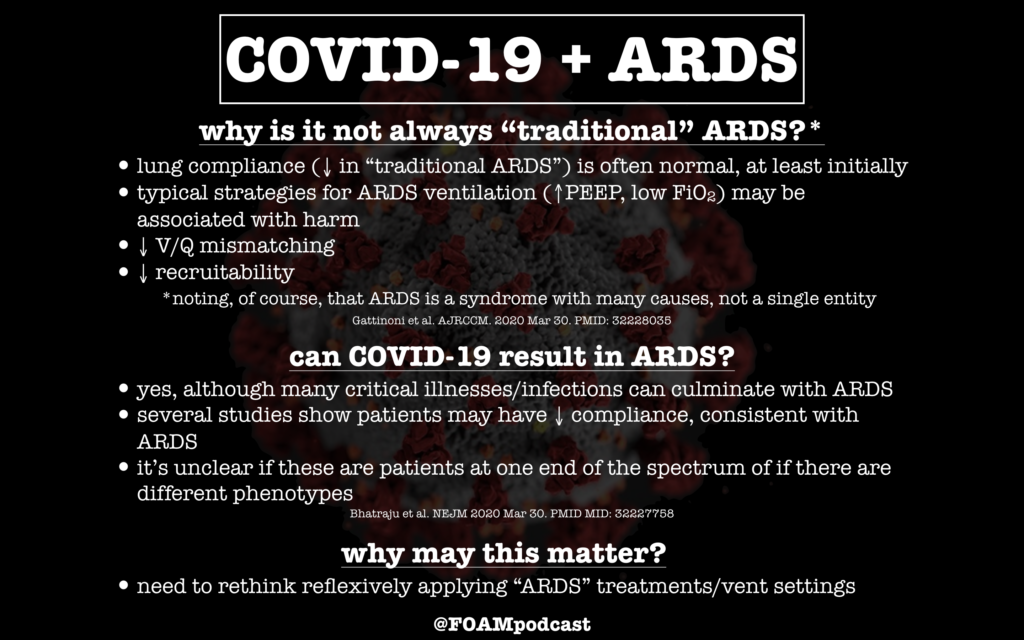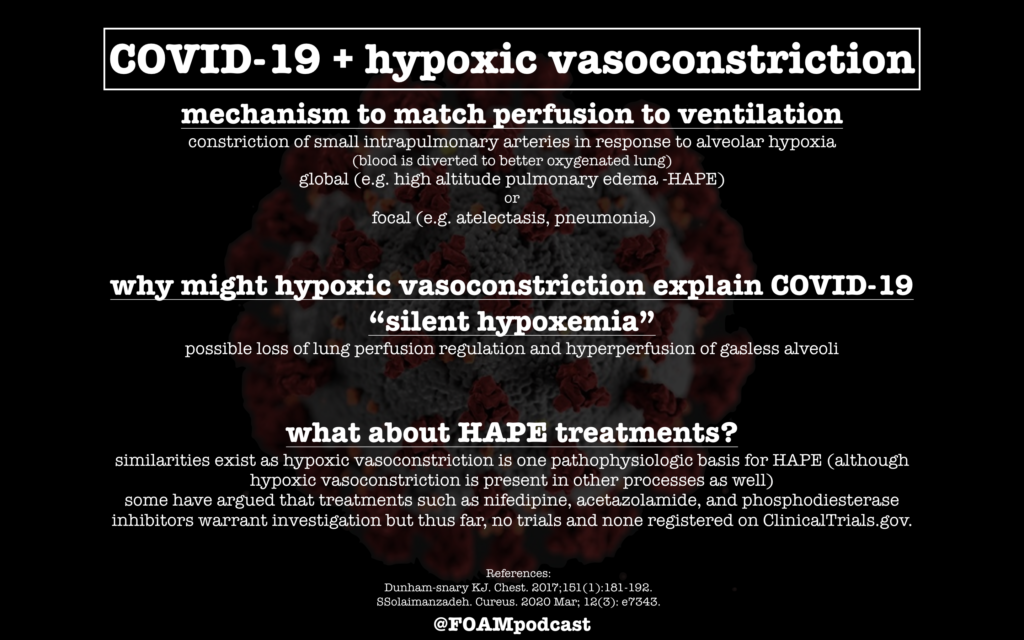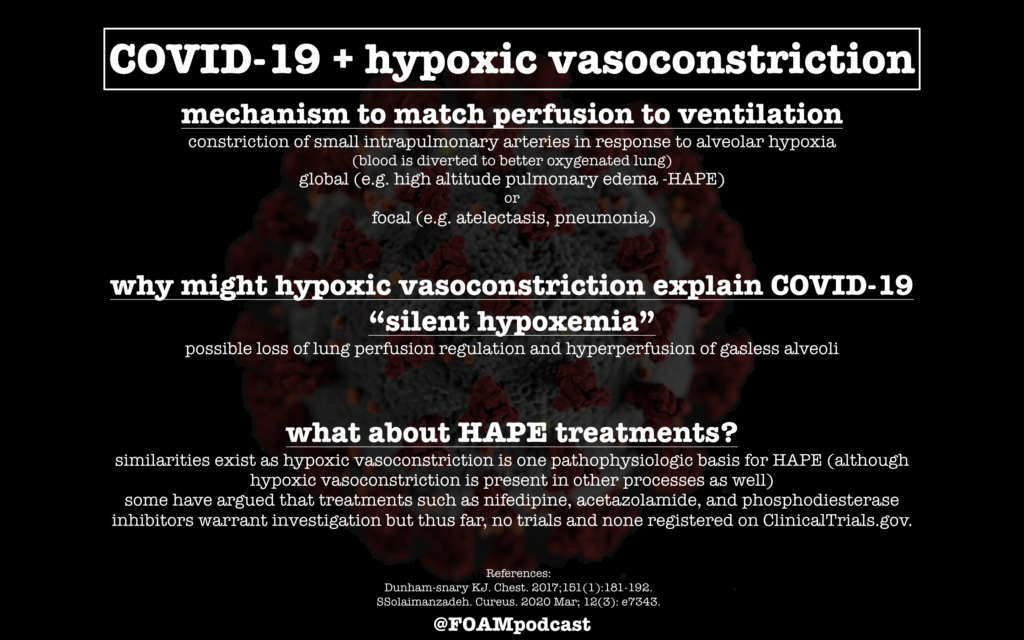We are bringing you near-daily updates on COVID-19. There is a firehose of information and most of us are too busy to read and digest it all. Note: If you are listening to these more than a few days in the future, please beware that information may have changed and check subsequent episodes. Today we are joined by Dr. Rory Spiegel of EMNerd to discuss various theories and possible mechanisms for the clinical picture we see with severe COVID-19.

Many people have been talking about the “hemoglobin hijacking” of COVID-19 but this is far from a certain theory and really only from a single computer simulation model.

It appears that hypoxic vasoconstriction is the most robust explanation at this time. This has led to some drawing parallels to high altitude pulmonary edema (HAPE).

Thiamine appears to be a carbonic anhydrase inhibitor with potency approaching acetazolamide. https://www.tandfonline.com/doi/full/10.3109/14756366.2011.637200 .
This leads to two questions:
1. Could thiamine, taken early in disease cycle, help people cope with disease at home, reducing burdens on hospitals? If so, it could be handed out when people come to get tested or mailed to households in impacted communities.
2. Given lower side effects, could thiamine allow higher and more frequent doses of carbonic anhydrase inhibitors than acetazolamide, which could potentially have application both at home and in hospital to reduce share of newly admitted patients who need to go to ICU or put on a ventillator?
More discussion and citations here, along with a proposed evaluation process. These ideas require rigorous evaluation but should be able to be studied relatively quickly. Feedback welcome!
https://docs.google.com/document/d/1vnYosVsgChnGVecOXp96T5i2UibTsnHVaDUVF6Us2uM/edit